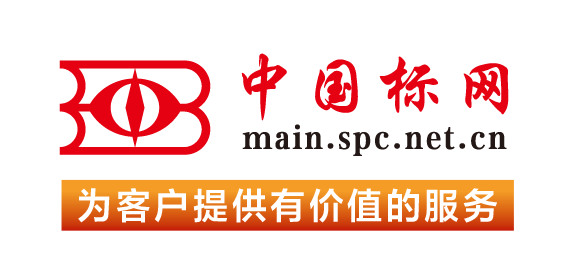【国外标准】 Standard Practice for Determining the Performance of Oil/Water Separators Subjected to Surface Run-Off
本网站 发布时间:
2024-02-28
开通会员免费在线看70000余条国内标准,赠送文本下载次数,单本最低仅合13.3元!还可享标准出版进度查询、定制跟踪推送、标准查新等超多特权!
查看详情>>
适用范围:
5.1 The Clean Water Act promulgated the implementation of water quality standards and contamination limits for a wide range of pollutants including oil and grease. Specifically, the EPA prohibits “the discharges of oil that cause a film or sheen upon or cause discoloration of the surface of the water.” Several state and local agencies have adopted this statement in addition to setting concentration limits, that is, 15 mg/L or even 5 mg/L. The purpose of this practice is to evaluate the performance of a separator in regards to the regulations and user requirements.5.2 Another purpose of this practice is to establish that a separator containing oil at its rated capacity would still be capable of meeting the above criteria when subjected to run-off.5.3 This practice is not applicable if the influent to a separator contained a sudden release as much higher concentrations would be expected. For this case, see Practice D6157.5.4 This practice is not applicable if the influent to a separator is conveyed by a pumping means.5.5 The data generated in this method is valid for the separators tested only. The results of these tests may be extrapolated to smaller or larger size separators provided that applicable geometric and dynamic similitude are maintained. Where sound engineering method limits the use of extrapolation, that size unit must be subjected to testing.5.6 The flow rate for all the tests must equal the manufacturer's total rated flow for the given separator at a given influent contamination level and for the selected effluent peak contamination concentration.1.1 This practice covers the procedure, any necessary related apparatus, and the sampling technique to be used in determining the performance characteristics of oil/water separators subjected to contaminated run-off.1.2 This practice does not address the determination of the performance characteristics of an oil/water separator subjected to the sudden release of a relatively large quantity of hydrocarbons that may appear, in pure form or at high concentration, in the influent to the separator. In this case, refer to Practice D6157.1.3 This practice does not address the determination of the performance characteristics of an oil/water separator subjected to a mechanically emulsified influent such as provided by a pump.1.4 This practice does not investigate the ability of the separator to handle debris or suspended solids, that is, grit or tree leaves.1.5 While the effluent may meet code requirements for total oil and grease content, this practice does not address the presence of soluble organics, that is, benzene, toluene, ethyl-benzene, and zylene (BTEXs) which may be detected in the effluent. It also does not make any provisions for the effects of detergents, surfactants, soaps, or any water soluble matter (that is, salts), or any portion of an essentially insoluble matter that may be found in solution on separation. (Effects of certain water soluble chemicals or solids may be investigated by adding them to the water at predetermined constant concentrations.)1.6 In order to estimate the effect of water temperature on the performance of the separator, the tests described in this practice must be performed at two water temperatures. The selected temperatures must be at least 10°C (18°F) apart, with the temperature ranging from a minimum of 0°C (32°F) to a maximum of 50°C (122°F).1.7 This practice does not make any provisions for the variation of pH or temperature during a test run. Refer to Appendix X1 for further detail.1.8 This practice can be used with a variety of hydrocarbons. It adopts No. 2 fuel oil with a density2 of 845 kg/m3 (52.73 lbm/ft3) and a viscosity2 of 1.9 to 4.1 centistokes at 40°C (104°F) and SAE 90 lubricating oil with a density2 of 930 kg/m3 (58 lbm/ft3) at 15.5°C (60°F) and a viscosity (see SAE J313) of 13.5 to < 24 centistokes at 100°C (212°F) as the comparative testing media. It is understood that the results obtained from this practice are only directly applicable to No. 2 fuel oil and SAE 90 lubricating oil for the tested concentrations and only careful interpolation or extrapolation, or both, is allowed to other hydrocarbons. Low viscosity or high density hydrocarbons or hydrocarbons that contain a larger fraction of highly soluble compounds may need to be tested separately.NOTE 1: No extrapolation outside the range of the tested influent or effluent oil concentrations is allowed as performance may not be linear. Hence, to establish performance at a higher or lower concentration, the separator shall be tested for that specific condition. In addition, linearity must be established prior to using linear interpolation.1.9 Since regulations are based on effluent total hydrocarbon content, this practice does not set forth any lower limits on oil particle size for the evaluation of separator efficiency. However, a standardized means for mixing oil and water shall be specified to ensure repeatability. It must be noted however that smaller particles, having a greater surface area to volume ratio, rise at a slower rate than their larger counterparts. (Guide F933 requires that 20 % of all oil particles be smaller than or equal to 50 μm and IMO MEPC 60 (30) does not mention any particle size requirements but asks the user to avoid emulsion causing chemicals.)1.10 Although the tests described in this practice intend to simulate contaminated storm water run-off separation requirements, they do not cover all possible applications. It is the end user's responsibility to determine whether his separation requirements are within the scope of this practice.1.11 A product different from the general description herein may be tested and found to be in compliance with the performance criteria set forth.1.12 The values stated in SI units are to be regarded as standard. The values given in parentheses are mathematical conversions to inch-pound units that are provided for information only and are not considered standard.1.13 This practice does not purport to address all the environmental hazards, if any, associated with its use. It is the responsibility of the user of this standard to establish appropriate environmentally responsible practices and to determine the applicability of regulatory limitations prior to use.1.14 This standard does not purport to address all of the safety concerns, if any, associated with its use. It is the responsibility of the user of this standard to establish appropriate safety, health, and environmental practices and determine the applicability of regulatory limitations prior to use.1.15 This international standard was developed in accordance with internationally recognized principles on standardization established in the Decision on Principles for the Development of International Standards, Guides and Recommendations issued by the World Trade Organization Technical Barriers to Trade (TBT) Committee.
标准号:
ASTM D6104-97(2017)e1
标准名称:
Standard Practice for Determining the Performance of Oil/Water Separators Subjected to Surface Run-Off
英文名称:
Standard Practice for Determining the Performance of Oil/Water Separators Subjected to Surface Run-Off标准状态:
Active-
发布日期:
-
实施日期:
出版语种:
- 推荐标准
- ASTM 51401-21 Standard Practice for Use of a Dichromate Dosimetry System
- ASTM 51956-21 Standard Practice for Use of a Thermoluminescence-Dosimetry System (TLD System) for Radiation Processing
- ASTM A1010/A1010M-24 Standard Specification for Higher-Strength Martensitic Stainless Steel Plate, Sheet, and Strip
- ASTM A1016/A1016M-24 Standard Specification for General Requirements for Ferritic Alloy Steel, Austenitic Alloy Steel, and Stainless Steel Tubes
- ASTM A105/A105M-24 Standard Specification for Carbon Steel Forgings for Piping Applications
- ASTM A1064/A1064M-24 Standard Specification for Carbon-Steel Wire and Welded Wire Reinforcement, Plain and Deformed, for Concrete
- ASTM A108-24 Standard Specification for Steel Bar, Carbon and Alloy, Cold-Finished
- ASTM A1080/A1080M-24 Standard Practice for Hot Isostatic Pressing of Steel, Stainless Steel, and Related Alloy Castings
- ASTM A1090/A1090M-19(2024) Standard Specification for Forged Rings and Hollows for Use as Base Plates in Power Transmission Structures
- ASTM A1115/A1115M-24 Standard Practice for Construction of Mechanically Stabilized Earth Walls with Inextensible Soil Reinforcement
- ASTM A1128-24 Standard Specification for Stainless Steel Shielded, Rubber Gasketed Couplings Having an Integral Restraint Feature for Joining Hubless Cast Iron Soil Pipes and Fittings Where External Restraint Is Required
- ASTM A179/A179M-24 Standard Specification for Seamless Cold-Drawn Low-Carbon Steel Heat-Exchanger and Condenser Tubes
- ASTM A234/A234M-24 Standard Specification for Piping Fittings of Wrought Carbon Steel and Alloy Steel for Moderate and High Temperature Service
- ASTM A242/A242M-24 Standard Specification for High-Strength Low-Alloy Structural Steel
- ASTM A249/A249M-24a Standard Specification for Welded Austenitic Steel Boiler, Superheater, Heat-Exchanger, and Condenser Tubes
 我的标准
我的标准 购物车
购物车 400-168-0010
400-168-0010














